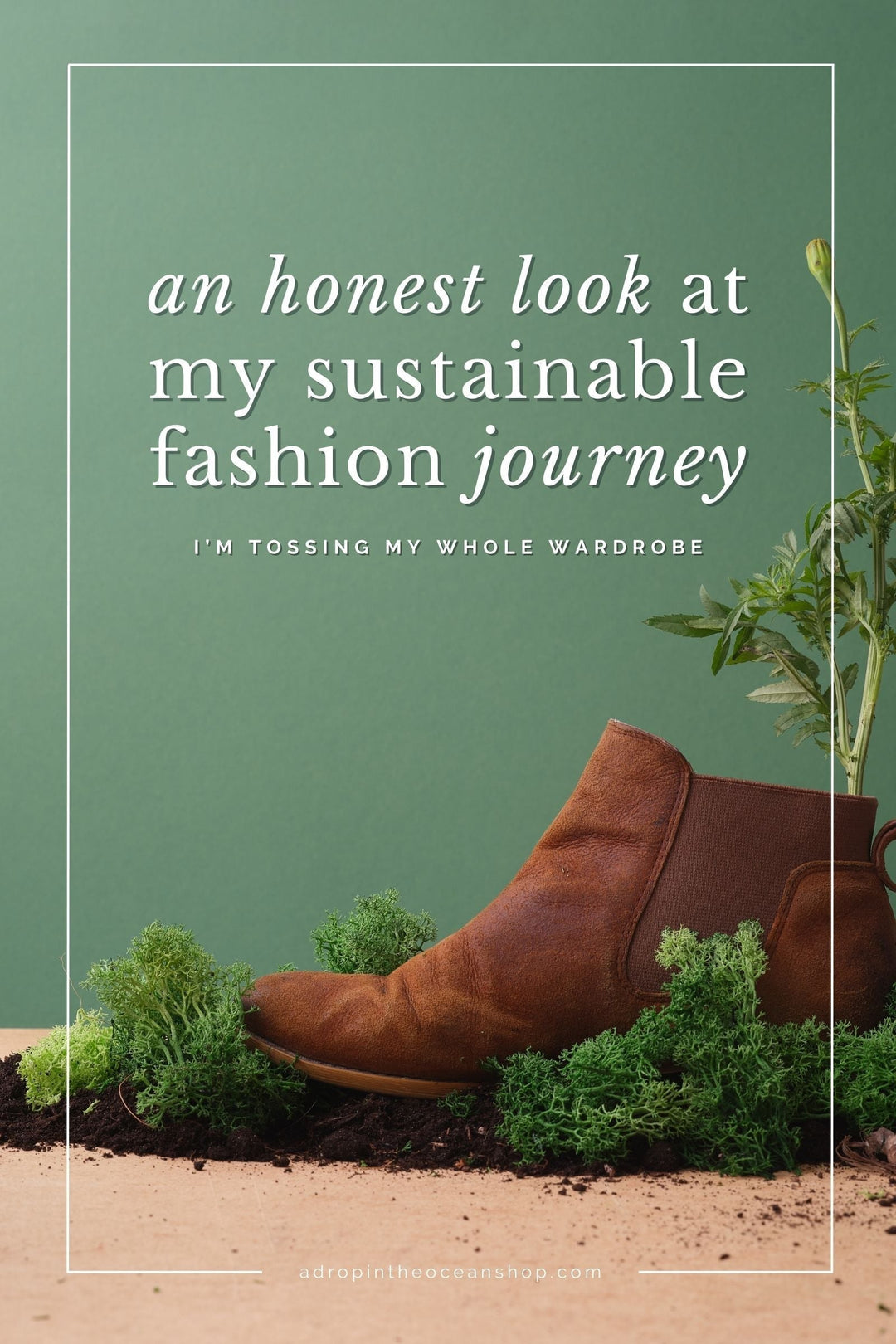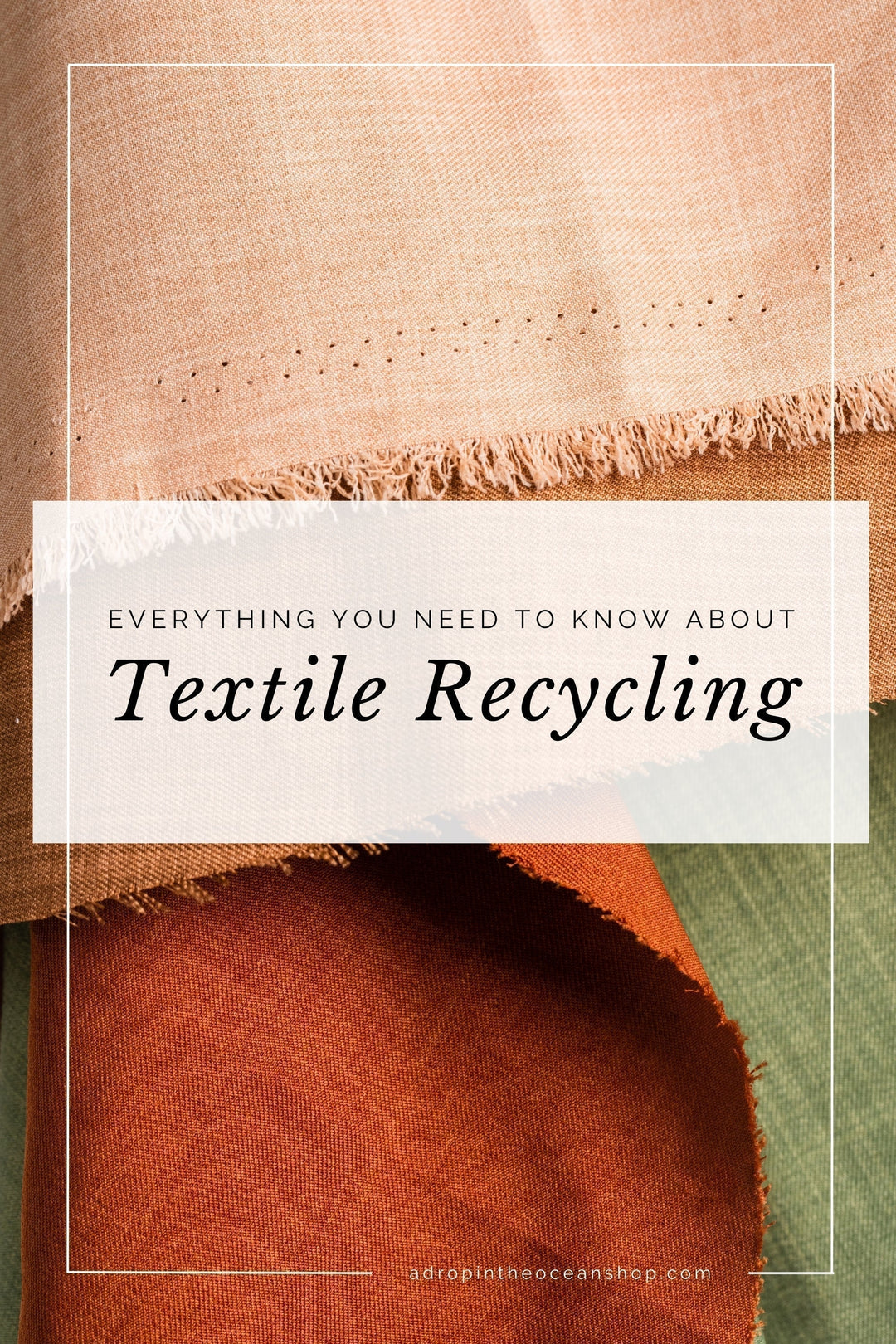6 Ways to Reduce the Carbon Footprint of Your Shopping Habits

This post first appeared in our weekly Make Waves Mondays email series on April 5, 2021.
Hey friend!
Two weeks ago we chatted about the environmental impacts of online shopping, why it’s actually more sustainable than in-person, and why we don’t have a local pickup option.
At the end of the post, I promised that this week I’d share some of my best tips for keeping our shopping as low impact as possible, whether in-person or online.
Of course, it’s important to remember that we cannot consume our way into a sustainable future for all living things.
Conscious consumerism is only a piece of the puzzle. One of my favorite blog posts was one of our firsts - Why Plastic Isn’t the Problem. We have to remember the first three R’s in our 6 R’s of Zero Waste: Rethink, Refuse, Reduce. Reducing our consumption is the first step.
But, of course, unless we go live off the grid and naked in the woods for the rest of our lives, we can’t just not buy anything ever again.
SO. Keeping all of this in mind. Let’s dive into my six tips for minimizing our shopping impact.
1. Larger orders. Less often.
Remember our shoppers from two weeks ago - Kelly, Louise, and Joan? Kelly did all of her shopping in-person, Louise shopped online but picked up in person, and Joan shopped online and had her orders delivered to her.
Their shopping eco-impacts were all different, and from different aspects of the shopping experience (customer driving, packaging, and delivery trucks). But no matter the method of shopping, if we order more of what we need at once, and less often, all of these impacts will be reduced.
If we’re shopping completely in-person, we’ll need to drive to the store less often, reducing our driving impacts. Same with local pick-up.
If we’re shopping online, the delivery trucks will carry a little more weight once, rather than less weight several times. And, there will be less packaging because it’ll be nice and bundled together.
One of our EcoWarriors, Ashley, recently made this switch with her subscription from A Drop in the Ocean.
Previously, she was getting 16oz of laundry detergent and a bath bomb shipped each month. She was also shipping back her empty jar each month. And, she was paying for shipping because her order didn’t meet the $50 minimum for free shipping.
But a couple months ago, she switched her subscription to 48oz of laundry detergent and 3 bath bombs every three months. We’re now only shipping one box every three months, and sending back the empties every three months, too. Plus, she’s getting free shipping on every order now. So we’re not only saving packaging and emissions, but Ashley is also saving money in the process.
It’s a win-win.
2. “No plastic packaging, please!”
Especially when you’re shopping online with smaller shops, when you’re checking out, there’s usually a box for order notes. If you’re not sure how the company packs their order (usually if they ship plastic-free they’ll say it outright), add a comment in that box asking them to only pack with paper materials, or without plastics.
Keep in mind, sometimes our requests aren’t heard the first time, but it’s important we keep asking. Because it raises awareness and demand for more sustainable packaging options.
And if they DO honor your request, send a quick email to thank them. It’s just as important to shout out good practices as it is to call out the bad.
3. Bundle your trips.
If you’re shopping in-person, bundle your trips together.
Do as much of your shopping as you can on the same day, and take the most efficient route possible. While I’m still waiting for Google Maps to release a route optimizer tool, Mapquest does have this feature. Add in up to 25 addresses, check all the boxes (shortest distance, allow to reorder, and round trip, if applicable), and click Preview Route. Mapquest will automatically reorder your stops to give you the most efficient route possible.
 A well-optimized route 😊
A well-optimized route 😊
4. Shop Local + Shop Small
Okay so there’s a couple pieces at work here.
First, the more local you shop, the less your products have to travel to get to you. Obviously, this doesn’t include the distance your products traveled to get to the shop itself, but small, locally-focused businesses are more likely to support other small, local businesses.
Here at A Drop in the Ocean, over half of our products come from within Washington state, and about three-quarters of our products come from the west coast (WA, Oregon, and California).
These small and local businesses aren’t just producing less emissions by sourcing locally, they’re also supporting the local economy.
When you shop local, $68 of every $100 spent stays within your local economy.
When shopping large corporations, that number drops to $43.
So by shopping small and shopping local, you’re reducing your emissions, encouraging practices that also limit emissions, supporting a network of small businesses and real business owners who are doing an actual happy dance every time you order, and keeping more of your money in your own community.
5. Ditch 2-Day Shipping
Two-day shipping has become the norm. In 2014, it took about six days for a package to be delivered when ordered online. In 2016, that dropped to just under five days. Today, nearly half of all online orders are delivered within two to three days.
But that short delivery time also means higher emissions, because trucks aren’t always being filled completely before setting off their deliveries, and airplanes may be used more often to keep delivery times short.
Two-day shipping is convenient, don’t get me wrong. But it’s really just not great for the planet.
Or small businesses.
Small businesses can’t keep up with the two-day shipping standards that have snuck into our society. Some business owners have had to limit their offerings (and therefore their creativity and potentially love for their craft), in order to better meet two-day shipping expectations.
As a small business owner myself, I can say that it’s HARD to get orders out the door in two days. After the COVID vaccine is rolled out, I’ll be bringing on a teammate to help pack and ship orders, but in the meantime, we’re shipping about twice a week, as best I can.
But this is about the planet, not me 😉
6. Rethink in-person pickup.
It’s tempting to choose in-person pickup when the option is available. Instinctively, it feels like that would be the more sustainable option. But, as we discussed two weeks ago with the environmental impacts of online shopping, it’s really not.
When you can, choose a delivery option. And keep all of these first five notes in mind, too :)
Whaddaya think, friend? Do you already do any of these? Or do you have any additional tips for your fellow EcoWarriors? Leave a comment below and share your best tips, too! The more knowledge we can all share, the better 💙
Keep on rocking, my friend. I’ll see you again next week.










I live in a apartment just like you. But I find it difficult to change my habits if the others won’t. I live with my parents and they don’t fully support this cause. We have reusable silicone baggies but she still uses the plastic ones at times. I also can’t help it if she buys from Amazon or does shopping every 3 days. I can’t hang dry my cloths because I don’t have that many clothes and that sun never shines on my porch. What can I do if I can’t control what she does?😔😞 I don’t mean to sounds like I’m complaining but I find it really frustrating that I cant say something (fear of getting in trouble) and that she just doesn’t understand the impacts of these things nor care enough to change them.
Leave a comment